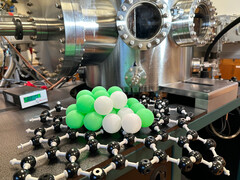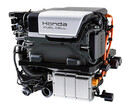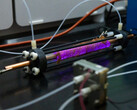Ammonia is one of the most promising candidates for simplifying the storage and transportation of hydrogen. Unlike hydrogen gas (H₂), ammonia (NH₃) doesn't have to be chilled and pressurized to liquify. It also doesn't require specialized alloys, since tiny hydrogen molecules can permeate even massive metals.
While ammonia, which contains a nitrogen atom bonded to three hydrogen atoms, isn't entirely harmless, strict limits apply to its concentration in the air we breathe. High concentrations can cause irritation, and even though ammonia is difficult to ignite, it can form explosive mixtures under certain conditions.
A well-known energy source
That being said, large quantities of ammonia have been safely stored and transported for over 100 years now. This makes it one of the best options for storing volatile hydrogen. In fact, ammonia's higher density means that it contains even more energy per liter than hydrogen. Excess electricity from renewable sources could be efficiently stored as ammonia and used later. But in order to use ammonia in fuel cells or even hydrogen-powered aircrafts, a more efficient and energy-efficient way to convert it back into hydrogen has to be found.
Catalyst improves automatically over time
Therefore, the University of Nottingham has now unveiled a remarkable catalyst for this exact purpose. It’s particularly unique because its efficiency improves over time due to structural changes that occur after the catalyst has been produced.
Under an electron microscope, researchers discovered that the rare element ruthenium, which was magnetically deposited on a graphite layer, gradually formed pyramid-shaped structures over time. This new structure makes the conversion of ammonia to hydrogen more efficient with each cycle.
This represents a significant step towards improving the efficiency of hydrogen storage and, as a result, energy storage in general. It also illustrates a more efficient way to use rare elements like ruthenium.



















